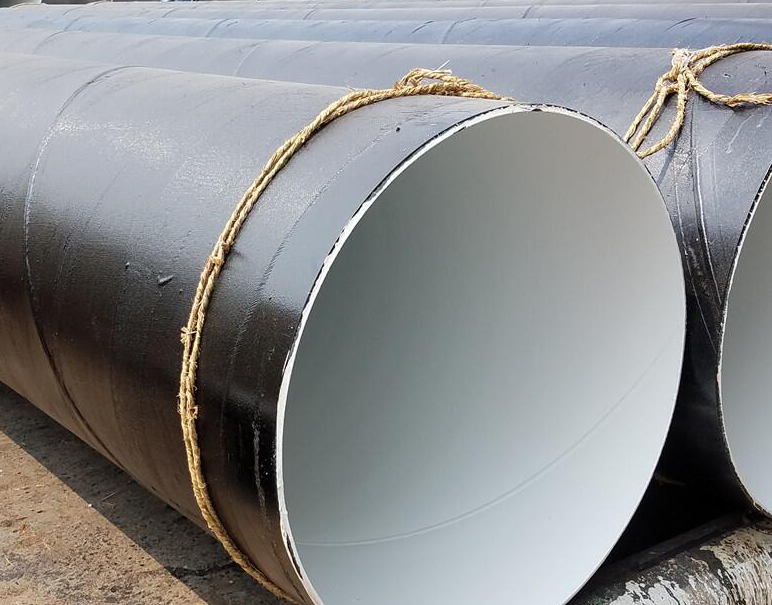
Internal Anti-corrosion of Steel Pipes
1. Preparation
Before carrying out internal anti-corrosion of steel pipes, preparation work must first be carried out. This involves cleaning the inside of the pipes to ensure there are no impurities or dirt in them. We will use gas or water to flush the inside of the pipes to ensure they are clean.
2. Choose appropriate anti-corrosion materials
It is important to choose anti-corrosion materials that are suitable for the specific pipe and environment. Common anti-corrosion coatings include epoxy resin, polyurethane, polyethylene and asphalt. When selecting anti-corrosion materials, factors such as the purpose of the pipeline, medium, temperature and pressure should be considered.

3. Coating construction
Apply the selected anti-corrosion material evenly to the inside of the pipe. This can be done by using methods such as brushing, rolling or spraying. Make sure the coating is evenly distributed and the thickness of the coating meets specification requirements.
4. Drying and curing
After the anti-corrosion coating is applied, sufficient time needs to be allowed to dry and cure. This time depends on the type and thickness of the anti-corrosion material used. During this period, the pipeline should be kept dry to prevent the anti-corrosion materials from getting damp.
5. Inspection and testing
After anti-corrosion work is completed, inspections and tests are performed to ensure the quality of the anti-corrosion coating. This may include checking the adhesion, density and uniformity of the coating. Additionally, penetration testing can be performed to verify the effectiveness of the coating.
6. Records and Documentation
Maintain all records and documents related to anti-corrosion work. These records include photos of the construction process, inspection reports, construction schedules and information on anti-corrosion materials used. These records are important for maintenance and monitoring of pipelines.
7. Maintenance and monitoring
The internal anti-corrosion work of steel pipes is not a one-time task, but requires regular maintenance and monitoring. Regularly inspect the anti-corrosion coating on the inside of your pipes for wear, corrosion or other damage and whether it needs repair or renewal.
8. Comply with regulations and standards
Anti-corrosion work must comply with applicable regulations and standards to ensure safety and quality. When performing work, be sure to comply with the requirements of relevant regulations and standards.
9. Anti-corrosion engineering major
For complex or large-scale projects, it is recommended to seek the help of professional anti-corrosion engineers or contractors to ensure the successful completion of the project and compliance with requirements.
Advantages of pipe inner coating:
From the current point of view, the use of internal coating technology for pipelines has the following advantages:
(1) Reduce the internal friction of the pipeline, improve its own performance, improve the fluidity of the pipeline, and improve its working efficiency. At present, most foreign relevant personnel believe that the surface roughness of some typical coated steel pipes is 6.4μm, while the inner surface roughness of new steel pipes is generally 19.1um, and the inner surface roughness of bare pipes is 45μm. When rough When the degree is lower than 90%, the pipeline friction coefficient will be reduced by up to 33%. At this time, the number of pipes will increase accordingly.
(2) Since the friction coefficient of the inner coating pipeline continues to decrease, the pressure difference between the booster stations can be reduced, the distance between stations can be expanded, and the number of booster stations can be reduced.
(3) Save pipe materials and construction costs. Since the roughness of the inner wall of the pipe will be reduced after coating, the hydraulic friction will also continue to change. In this way, when the gas transmission volume reaches a certain level, other conditions will not change, and the designed pipe diameter can be adjusted, which can save a lot of pipe costs and achieve the corresponding purpose.
(4) Reduce transmission power consumption and save fuel costs. According to the corresponding data survey, it was found that after using the inner coating, the power consumption of gas transmission can be reduced by about 20%.
(5) It has a certain protective effect on the inner wall of the tank. In the daily work process, the appearance of some other impurities often causes corrosion in the pipeline, thus affecting the overall quality of transportation.
(6) Do a good job in pipeline inspection. After the pipeline is coated, its inner wall is relatively smooth, and it is also convenient for the corresponding staff to do inspection work and conduct comprehensive inspections for cracks, corrosion and other problems.
(7) Reduce maintenance costs. According to the corresponding data survey, it was found that the driving force of coated pipes is relatively strong, while the driving pressure of uncoated pipes is relatively small, and coated pipes are not easily contaminated with impurities, and are easier to clean during the cleaning process. Reduce the number of cleanings, thereby reducing maintenance fees. In recent years of development, internal coating technology has been applied to original pipelines, which can reduce the amount of deposition by 25%.
When it comes to preventing internal corrosion of steel pipes, both the quality of anti-corrosion work and periodic inspections of maintenance are crucial. The long-term performance and safety of steel pipes can only be ensured with the correct selection of suitable anti-corrosion materials, correct construction and regular maintenance.


